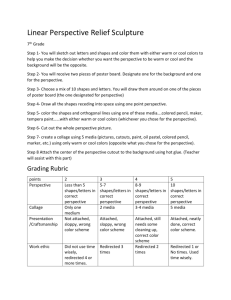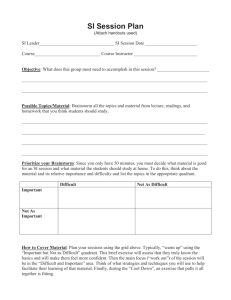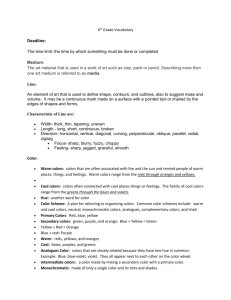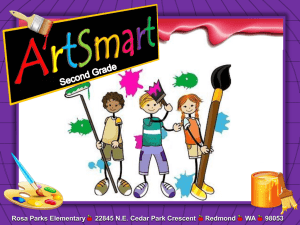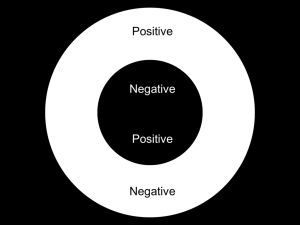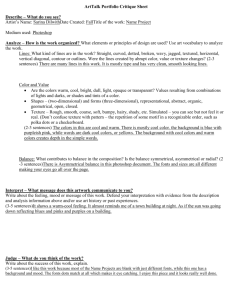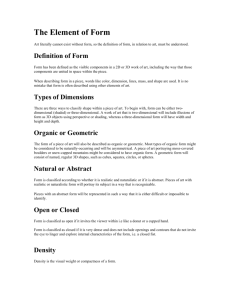Geometric/Organic
advertisement
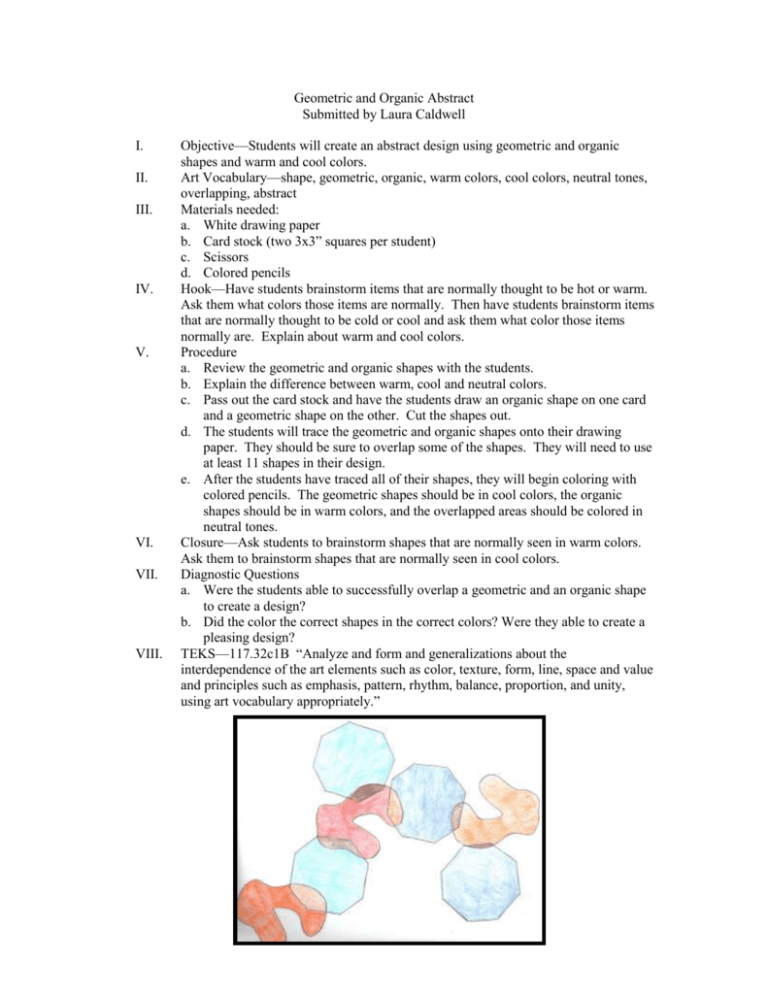
Geometric and Organic Abstract Submitted by Laura Caldwell I. II. III. IV. V. VI. VII. VIII. Objective—Students will create an abstract design using geometric and organic shapes and warm and cool colors. Art Vocabulary—shape, geometric, organic, warm colors, cool colors, neutral tones, overlapping, abstract Materials needed: a. White drawing paper b. Card stock (two 3x3” squares per student) c. Scissors d. Colored pencils Hook—Have students brainstorm items that are normally thought to be hot or warm. Ask them what colors those items are normally. Then have students brainstorm items that are normally thought to be cold or cool and ask them what color those items normally are. Explain about warm and cool colors. Procedure a. Review the geometric and organic shapes with the students. b. Explain the difference between warm, cool and neutral colors. c. Pass out the card stock and have the students draw an organic shape on one card and a geometric shape on the other. Cut the shapes out. d. The students will trace the geometric and organic shapes onto their drawing paper. They should be sure to overlap some of the shapes. They will need to use at least 11 shapes in their design. e. After the students have traced all of their shapes, they will begin coloring with colored pencils. The geometric shapes should be in cool colors, the organic shapes should be in warm colors, and the overlapped areas should be colored in neutral tones. Closure—Ask students to brainstorm shapes that are normally seen in warm colors. Ask them to brainstorm shapes that are normally seen in cool colors. Diagnostic Questions a. Were the students able to successfully overlap a geometric and an organic shape to create a design? b. Did the color the correct shapes in the correct colors? Were they able to create a pleasing design? TEKS—117.32c1B “Analyze and form and generalizations about the interdependence of the art elements such as color, texture, form, line, space and value and principles such as emphasis, pattern, rhythm, balance, proportion, and unity, using art vocabulary appropriately.”


